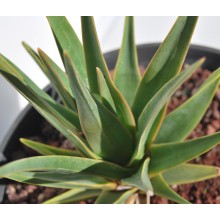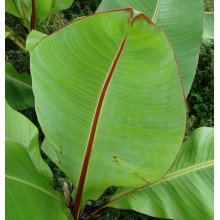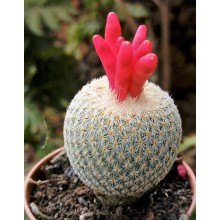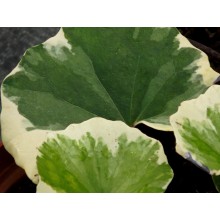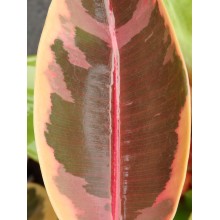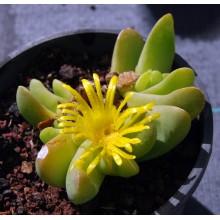Especiales Hay 79 productos.

En canarius.com tratamos de ir más allá de los límites en el campo de la botánica. En nuestra tienda en línea tratamos de facilitar la compra de plantas de cualquier parte del mundo. Por eso, cultivamos desde las especies más comunes hasta las plantas más especiales, como podrá ver en esta sección.
Subcategorías
-
Plantas resistentes al Frío
Esta es nuestra selección de plantas que pueden soportar algo de frío. Algunas sólo resistirán un clima frío y un poco de escarcha, pero otras aguantarán fuertes heladas en climas más fríos. Todas son muy diferentes, pero merecen ser probadas, porque todas estas plantas de aspecto tropical tienen requisitos no tropicales. Seguramente prosperarán al aire libre en climas mediterráneos costeros, o en un invernadero mínimamente climatizado donde no se cree escarcha.
-
Plantas curiosas
Esta es nuestra selección de plantas extraordinarias. Son todas muy diferentes y, de alguna manera, inusuales. Hay plantas aéreas, bananas rojas, piedras vivas, plantas con hojas negras, cactus zig-zag y todo tipo de plantas llamativas que pueden ser tema de conversación.
-
Plantas Variegadas
Las plantas variegadas tienen hojas rayadas o manchadas con colores atractivos. La variegación en las plantas puede ocurrir por muchas razones. La más común es un error genético que de vez en cuando aparece en la naturaleza. Un variegación blanca es el resultado de la incapacidad de una planta para producir cualquier pigmento en ese área. Una menor producción de los pigmentos de la clorofila permitirá que aparezcan colores como naranja, amarillo y verdes claros, o incluso tonos de rosa, rojo y púrpura. Estas plantas son más lentas que sus parientes verdes y, a menudo, más caras. Ofrecemos Agaves variegados, Aspidistras variegadas, Bromelias variegadas y un montón de Suculentas variegadas.
-
Plantas Resistentes a la sequía
En esta sección agrupamos aquellas plantas que se adaptan a las condiciones áridas o de sequía. Normalmente, la mayoría de estas especies, que se cultivan en condiciones áridas, tienen hojas cerosas, suculentas, peludas, pegajosas, tipo agujas, o incluso, más pequeñas que el resto.
En Plantas resistentes a la sequía se puede encontrar cualquier especie con estas características: Pithecellobium dulce, Ruta graveolens, Syzygium cordatum, Tamarindus indica y así sucesivamente.
-
Dracaena cinnabari
Dracaena cinnabari
The most extraordinary dragon tree is the one from the island of Socotra. Here we offer 4-5 years old seedlings.
83,40 € -
Dracaena cinnabari- LARGE
Dracaena cinnabari- LARGE
The most extraordinary dragon tree is the one from the island of Socotra. Here we offer 5-6 years old seedlings.
287,00 € -
Dyckia fosteriana rubra
Dyckia fosteriana rubra
This is a supreme clone of Dyckia fosteriana, with bronze coloured rosettes. It is a cold-resistant bromeliad from the rocky mountains of Paraná, in South Brazil.
19,50 € -
Ensete ventricosum - Abyssinian Banana
Ensete ventricosum - Abyssinian Banana
This "mountain banana" comes from high-elevation tropical Africa and bears enomous leaves with a solid red rachis. It grows well in warm temperate and Mediterranean climates. It is not a true banana of the genus Musa, so its fruits are not edible. Nevertheless, in Africa the corms are regularly collected and eaten.
57,30 € -
Epitelantha micromeris
Epitelantha micromeris
Very ornamental small cactus from the SW USA and Mexico, coated with white unharmful spines. It blooms in late winter with pale pink flowers that are soon followed by some very attractive frutis, which are dark pink, glossy and last form months!
10,80 € -
Erythrina vespertilio - Bat's wing coral tree
Erythrina vespertilio - Bat's wing coral tree
This Australian Erythrina is incredibly attractive shrub to small tree, with unmistakeable bat-wing trifoliate leaves. It is graceful and easy to grow. It grows in dey areas and develops a thick base: a caudex which grows very thick both underground and above ground. It is suitable to pot colture and the caudex can be exposed as a potted "bonsai".
119,80 € -
Euphorbia pulcherrima 'Tall Wild Type'
Euphorbia pulcherrima 'Tall Wild Type'
This is the most classic tall heirloom poinsettia which is so widespread in the old gardens of the Canary Islands and the Southern Mediterranean.
24,50 € -
Euphorbia pulcherrima 'Tall Wild Type' YELLOW
Euphorbia pulcherrima 'Tall Wild Type' YELLOW
This is the most classic tall heirloom poinsettia which is so widespread in the old gardens of the Canary Islands and the Southern Mediterranean.
24,50 € -
Farfugium japonicum 'Argenteum'
Farfugium japonicum 'Argenteum'
This classic clone of Farfugium is still unsurpassed in beauty. Leaves show many different hues of white. This variegated 'Argenteum' adds light to a shady spot in the garden. It has been around for more than a century but it is still only grown by specialized nurseries because it is slower than other cultivars.
24,50 € -
Glottiphyllum difforme
Glottiphyllum difforme
This is the most beautiful and least known species in the genus Glottiphyllum. Few collectors grow it and no pictures in the web show the beauty of well-grown plants.
16,80 € -
Glottiphyllum neilii
Glottiphyllum neilii
The "King of the Glotts" is said to be the largest of all the species in the genus Glottiphyllum. Leaves can get quite red when somehow stressed, It is easy to grow, and just as the rest of the genus Glottiphyllum it is chiefly winter-growing but it does not have a true resting season.
10,70 € -
Glottiphyllum oligocarpum
Glottiphyllum oligocarpum
This is a very attractive compact and blue glotty. Leaves are short and waxy and can look blue to grey. The flowers are so large that they cover the whole rosette.
12,00 € -
Heliconia mariae
Heliconia mariae
Hanging heliconia of unusual beauty, with velvety-hairy pink inflorescences and gorgeous foliage, which is glossy and marron underneath.
64,20 € -
Heliconia x 'Pendulata Spotty Stems'
Heliconia x 'Pendulata Spotty Stems'
We selected this hybrid here in Tenerife. It is a particularly nice and hardy cross between Heliconia subulata and H. pendula, which are two cool-hardy species, good for the subtropics.
27,76 € 34,70 €¡Precio rebajado! -
Hoya kerrii 'Variegata'
Hoya kerrii 'Variegata'
A variegated clone of the popular heart-shape leaved Hoya kerry. Easy to grow even in tough conditions, thanks to its succulent leaves.
28,50 € -
Hydnophytum moseleyanum
Hydnophytum moseleyanum
This caudex ant-plant is an epiphytic plant that develop a huge chambered stem, providing shelter for some species of ants.In turn, these ant-plants, or myrmecophytes, receive nutrients and protection from the ants. The caudex of Hydnophytum moseleyanum can get quite large, up to 20-40 cm in diameter, and the bark is grey and smooth (much like the one of...
17,20 € -
Manilkara zapota 'Alana'- Sapodilla
Manilkara zapota 'Alana'- Sapodilla
Interesting evergreen fruit tree native from Central America.Now in cultivation in many tropical and subtropical countries of Asia.
79,90 €
En estos momentos tenemos pocos productos en esta categoría Especiales























